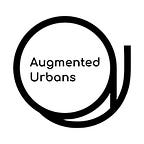Planners’ Forum Cēsis: Moving forward with resilience and XR
This March, Augmented Urbans teams from seven cities in four countries around the Baltic Sea got together in Cēsis, Latvia for the third and the last Planners’ Forum.
The intensive three days began with a nourishing walk around the Local Action site in the forests of the breathtaking Gauja National Park adjacent to the city of Cēsis. With guidance by the Chief Spatial Planner of Cēsis, Evija Taurene, we immersed ourselves in the rich history and exciting future visions for Gauja National Park, Cīrulīši and Cēsis.
Cīrulīši was a popular and well-known resort destination for decades during the Soviet times, and now the area is about to enter a new chapter in its story. Urban planners are thinking of ways to integrate the unique natural areas of Gauja National Park with the culturally vibrant nearby Cēsis by promoting sustainable tourism and recreation. Linked to the Augmented Urbans Local Action activities, a new eco-resort is being planned there to continue the local history and breathe new life into the contemporary site.
During the partner meeting days of the Planners’ Forum, we experienced the current versions of our XR applications, engaged in workshops and dove into discussions about what is next in store for Augmented Urbans.
The XR-enhanced participatory processes of Local Actions are going forward. As we continue implementing our Local Actions, new insights and learnings make way for the policy recommendations to begin taking shape. They will play an important part in the project’s outputs, a final publication and exhibitions.
On the third and final day, we invited external experts to join the discussions on urban planning, resilience, and XR technologies.
Planners’ Forum invited experts to join the discussion
Our Project manager Päivi Keränen kicked off the public day of Planners’ Forum by introducing Augmented Urbans and examples of how XR technologies have been used in supporting planning and understanding urban environments.
You can find Keränen’s presentation here.
Riga-based landscape architect and partner Helēna Gūtmane from ALPS sees collaborative urban planning and enhanced public spaces as tools for social revival.
Gūtmane talked about public spaces and social innovation through example cases she had been involved with in Latvia. It is often the simple solutions, like bringing more greenery into public spaces, that can truly enhance humans’ well-being. This is true also indoors as Gūtmane showed in an example case of an exhibition design that promoted healing potential of nature by bringing plants directly to healthcare patients.
Gūtmane has been involved with several other projects, like reimagining Barona Street in Riga as a more pedestrian-oriented space.
You can find Gūtmane’s presentation here.
Damiano Cerrone from Demos Helsinki talked about urban transformations of our time. As argued by the urbanist giants Jane Jacobs and Jan Gehl, the way to improve our cities is to put the human back in the focus of our planning. To do this, we need to start by investing in infrastructure and services that support the idea of making the city for people — i.e., allocating more urban space for softer uses than traffic.
Technology can help in this process, but Cerrone also emphasised the need to move from “big data to thick data”: gathering meaningful data is a better strategy for urban planners than hoarding huge amounts of irrelevant data.
You can find Cerrone’s presentation here.
Leading researcher Dainis Jakovels from the Institute for Environmental Solutions (IES) talked about how remote sensing has changed the way we study some quantitative aspects of our cities. For example, the rapid advancement in satellite and drone technologies in recent years has made it possible for us to map vegetation in cities with unforeseen precision. This new efficiency in resources and digital tools is invaluable as we strive to enhance urban resilience.
You can find Jakovels’ presentation here.
To conclude the inspiring talks, three groups of architecture students presented their spatial prototypes for ecosystem services in Cēsis.
See the first presentation “Expanding Borders of City Cesis — “Edge” — Revitalisation of Gauja river bank” here.
See the second presentation “Eco-tourism in Cesis — Cup of Cesis: Designing a tea ritual” here.
See the third presentation “Recreation place on the coast of Gauja” here.
Moving forward with Local Actions
The Local Actions of Augmented Urbans were presented in a poster exhibition during the final day of Planners’ Forum. Each team had distilled their project’s main points into a visually interesting poster format. As the teams presented their posters to the audience, new discussions immediately arose.
You can see the Local Action posters here.
As with our previous Planners’ Forums, the meetings and activities in Cēsis were immensely inspiring and useful in preparing us for the next steps. I want to give big thanks on behalf of everyone who attended to our Cēsis team for organising such a wonderful event — let’s hope we can all get together soon again!
—
Text: Jalmari Sarla, Communication Manager of Augmented Urbans, Metropolia UAS
